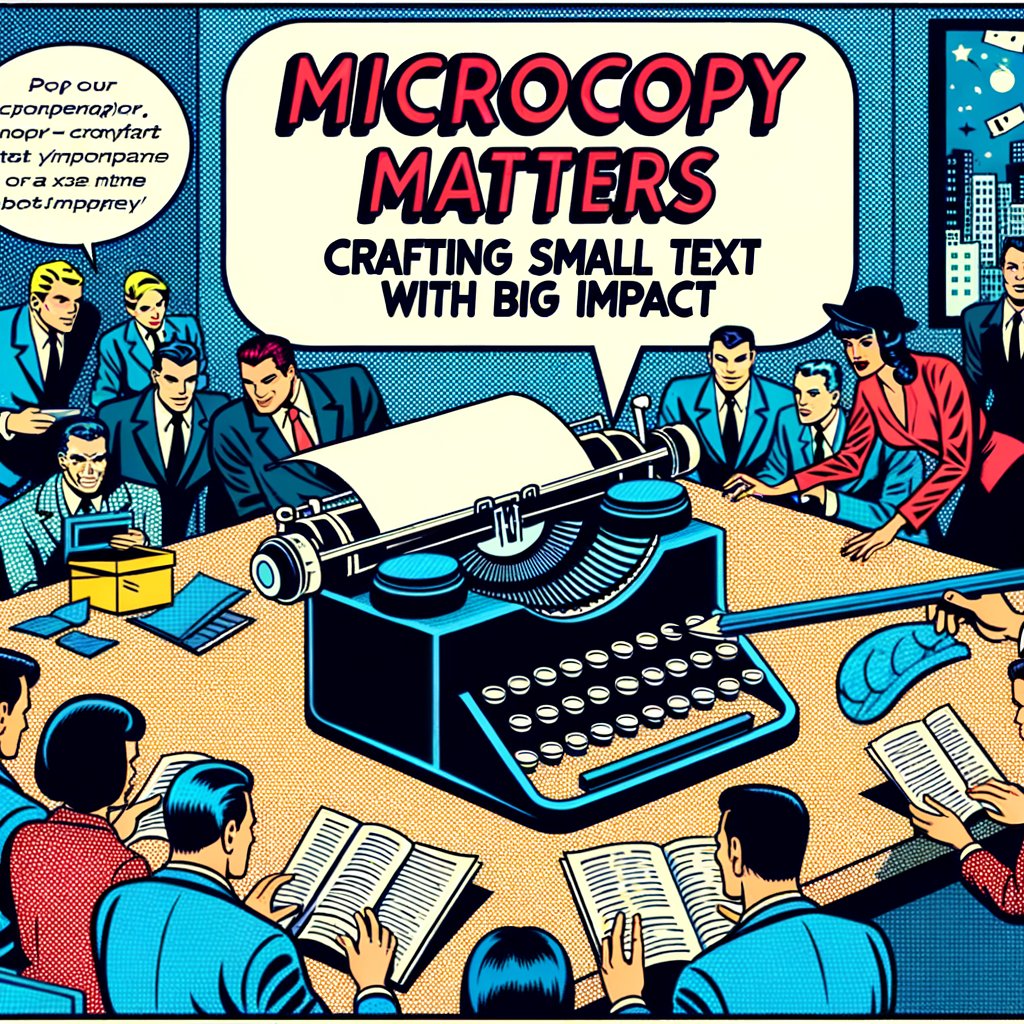
Microcopy Matters: Crafting Small Text with Big Impact
January 25, 2025
Introduction
Ever noticed how a few well-placed words can make all the difference on a website? That’s the magic of microcopy—the small bits of text that guide, inform, and inspire users as they navigate your digital space. From button labels to error messages, microcopy plays a crucial role in shaping user experience. Let’s explore how these tiny pieces of text can have a monumental impact on your website’s effectiveness.
The Mighty Power of Microcopy
While often overlooked, microcopy is the unsung hero of user experience design. It’s the whisper in your user’s ear that says, “Click here,” “Enter your email,” or “Oops, something went wrong.” These brief messages can reassure users, clarify confusion, and even elicit a chuckle. By focusing on microcopy, you’re not just tweaking words—you’re enhancing the entire interaction between your website and its visitors.
Enhancing User Experience
At its core, microcopy serves to improve usability. Clear and concise instructions help users accomplish tasks effortlessly. When users know exactly what to do and what to expect, they’re more likely to engage positively with your site. Microcopy removes ambiguity, reduces errors, and makes navigation a breeze.
Conveying Brand Personality
Microcopy is also a fantastic avenue to express your brand’s personality. Whether your tone is professional, quirky, or friendly, these small snippets are prime real estate for showcasing character. A witty error message or a warm greeting can make your site memorable and foster a stronger connection with your audience.
Crafting Compelling Calls-to-Action
Calls-to-action (CTAs) are the catalysts that drive user engagement. They’re the prompts that encourage users to subscribe, download, purchase, or learn more. Crafting effective CTAs is both an art and a science.
Be Clear and Direct
Ambiguity is the nemesis of action. Ensure your CTAs tell users exactly what they need to do. Phrases like “Sign Up Now,” “Get Your Free Guide,” or “Start Shopping” leave little room for confusion.
Create Urgency (But Don’t Overdo It)
Encouraging users to act promptly can boost conversions. Phrases that suggest immediacy, such as “Limited Time Offer” or “Join Today,” can motivate users to take the next step. However, overusing urgency can come across as pushy, so use this tactic judiciously.
Keep It Concise
Simplicity is key. A CTA should be short and sweet, ideally no more than a few words. Long-winded prompts can overwhelm or bore the reader. Remember, the goal is to inspire action with minimal friction.
Designing Helpful Error Messages
Error messages are inevitable—users will occasionally stumble, pages may not load, or forms might be incomplete. How you handle these hiccups can significantly affect user sentiment.
Be Empathetic
An error message should acknowledge the user’s frustration without adding to it. Phrases like “We’re sorry, something went wrong” show that you understand and care about the inconvenience.
Provide Solutions
Don’t just tell users there’s a problem; guide them toward a resolution. If a password is incorrect, suggest resetting it. If a page isn’t found, provide a link back to the homepage or a search function.
Maintain Brand Voice
Even in moments of trouble, stay true to your brand’s personality. A lighthearted tone might ease frustration, while a straightforward message could be more appropriate for a serious brand.
Utilizing Tooltips and Help Text
Tooltips and help text are subtle ways to offer additional information without cluttering your design. They can clarify complex processes, define unfamiliar terms, or provide extra guidance where needed.
Keep It Relevant
Only provide help where it’s necessary. Overloading users with unnecessary tips can be distracting. Identify areas where users might hesitate or make mistakes and offer assistance there.
Be Concise and Clear
Tooltips should enhance understanding, not complicate it. Use simple language and get straight to the point. The goal is to support the user seamlessly.
Timing Matters
Ensure that tooltips appear at the right moment—ideally when the user hovers over an element or begins interacting with it. Poor timing can lead to annoyance or missed information.
Infusing Personality Through Microcopy
Microcopy offers a subtle canvas to paint your brand’s personality. It’s an opportunity to engage users on a human level.
Use a Conversational Tone
Speaking directly to users in a friendly manner can make interactions more enjoyable. Instead of “Submit Form,” try “Let’s Go!” or “I’m Ready!”
Balance Wit with Clarity
While a bit of humor can be delightful, never sacrifice clarity for the sake of a joke. The primary goal is to communicate effectively.
Be Inclusive
Ensure your language is accessible and inclusive to all users. Avoid jargon, slang, or references that might not be universally understood.
Microcopy Best Practices
Crafting excellent microcopy involves a blend of empathy, clarity, and consistency.
Understand Your Audience
Know who you’re speaking to. Tailor your language to their preferences, vocabulary, and level of technical expertise.
Consistency Is Key
Maintain a consistent tone and style throughout your microcopy. This uniformity builds trust and familiarity with your audience.
Test and Iterate
Don’t set it and forget it. Regularly review your microcopy to ensure it’s effective. Gather user feedback, conduct A/B testing, and be willing to make adjustments.
Avoid Negative Language
Focus on positive phrasing. Instead of saying, “Don’t miss out,” try “Join the fun!” Positive language encourages and uplifts, creating a more pleasant experience.
Conclusion
Microcopy may be small in size, but its impact is immense. By paying close attention to these tiny text elements, you can vastly improve user experience, foster a stronger connection with your audience, and guide users smoothly through your website. Remember, every word counts. So take the time to craft microcopy that speaks volumes, even in a whisper.
